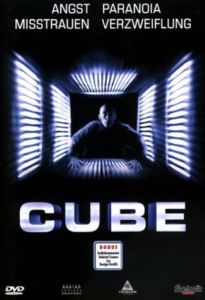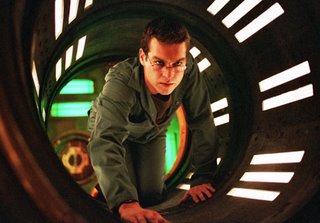Cube: caught among prime numbers
 cted by Vincenzo Natali in 1997. It dealt with a bunch of people locked inside a huge cube divided into a lot of cube-shaped rooms, some of which were safe while the others were full of mortal traps. One of the persons locked inside, a young mathematician, achieves the key to pass from one room to the next in this dangerous game: if the numbers written below each window of the room are prime numbers, it means that the next room is safe.
cted by Vincenzo Natali in 1997. It dealt with a bunch of people locked inside a huge cube divided into a lot of cube-shaped rooms, some of which were safe while the others were full of mortal traps. One of the persons locked inside, a young mathematician, achieves the key to pass from one room to the next in this dangerous game: if the numbers written below each window of the room are prime numbers, it means that the next room is safe.Knowing if a number with many digits is a prime or not (which means if it has a divisor different from 1 and the number itself) is quite complex and turns into one big headache for the authority in maths. The only way to prove it is trying to divide it into all the smaller prime numbers, which is quite a lot of work ... Nevertheless, there is a quite simple rule: only odd numbers can be prime, for the simple reason that even numbers are divisible by two. Neither can be numbers ending in 5 be primes, as they are always divisible by 5. Therefore, only numbers which have 1, 3, 7 or 9 as their last digit can be primes. The screenplay’s writer forgot this and made the mathematician girl rack her brains to find out if a number ending in 2 was or wasn’t a prime number ...
Mathematicians have been thinking of prime numbers since the beginning of time, and they actually couldn’t come to any other conclusion about the subject. Distribution among those ending in 1, 3, 7 or 9 is quite uniform, and it is also well known that prime numbers are infinite, even if they get more and more distant from each  other as we get into bigger and bigger amounts (the percentage of prime numbers is greater between 1 and 1000 than the percentage between 1.000.001 and 1.001.000). The fact is, though, that there can’t be a last prime number. Why is that? If we multiply that huge prime number by all the smaller prime numbers and we add 1 to the result, we would find another prime number. We actually would never get an exact result dividing that number by any prime number at all, as we would always get 1 as remainder.
other as we get into bigger and bigger amounts (the percentage of prime numbers is greater between 1 and 1000 than the percentage between 1.000.001 and 1.001.000). The fact is, though, that there can’t be a last prime number. Why is that? If we multiply that huge prime number by all the smaller prime numbers and we add 1 to the result, we would find another prime number. We actually would never get an exact result dividing that number by any prime number at all, as we would always get 1 as remainder.
But going back to Cube, numbers came to be coordinates defining the position of each room inside the cube, from which the people locked inside reached the conclusion that the cube was spinning. Then, if they stood still inside one cell, there would come a moment in which the cell would become an outer one: that would allow them to reach the cube’s exit … That’s a funny conclusion, as in a movement of rotation (spinning) the inner sides of the rotating object always stay inner, while the outer ones are always outer … otherwise we would find ourselves in the very core of the Earth one day, as our planet is turning round and round all the time. Nevertheless, years go by and we are still on its surface. And that is a property shared by both spheres and cubes.

0 Comments:
Post a Comment
<< Home